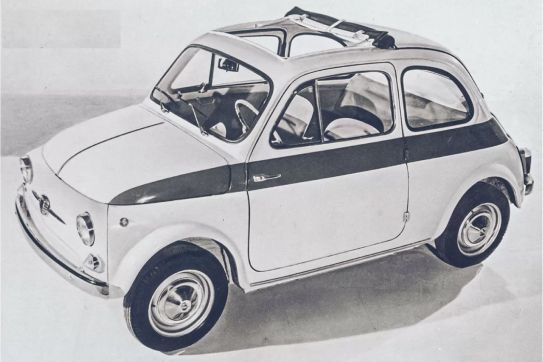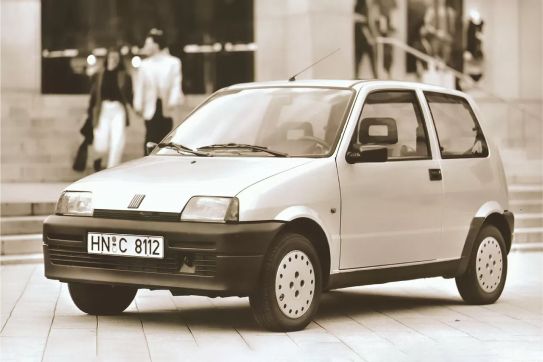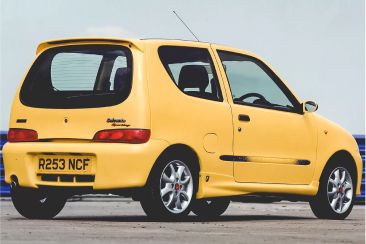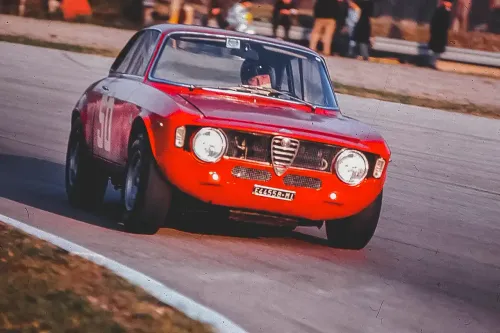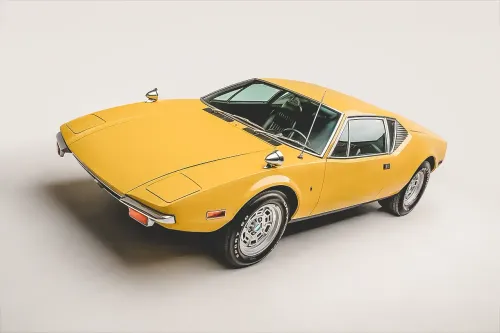Cinquecento Sport the micro-GTI
More modern and smaller, the 500 “Topolino”, was the first of the 500 lineage, and never had an official sports version, despite having served as the basis for countless independent tuners and builders.
This was followed by the popular 500 Nuova, in 1957 (and until 1975). With 13 hp, it was fun, but not sporty. However, the year following the launch, Fiat rushed to launch a spicier version, called the 500 Sport. With just 20cc more displacement, it now reached 21.5hp and complemented this extra energy with a captivating appearance, thanks to stripes on the sides and rims in red.
Following the 500, came the 600 and 126, which despite having received sporty treatment by Abarth and Giannini, did not have any official sporty version.
The authorship of the bodywork design is attributed to Ermanno Cressoni, who headed Centro Stile Alfa Romeo and later Centro Stile Fiat.
In 1991, the Cinquecento appeared, internal code Type 170. The idea of using the name in full helped to foster affection for the model and simultaneously position it as something accessible, but glamorous. Since the beginning of the 80s, Fiat had been studying concepts for a city car, more sophisticated than the Panda, but equally cheap to produce. Everything came to a head with the acquisition of the Polish company FSM, (a company until then only partially owned by Fiat), which produced the 126 and started producing the Cinquecento, in Biesko-Biala.
More modern and smaller, the 500 “Topolino”, was the first of the 500 lineage, and never had an official sports version, despite having served as the basis for countless independent tuners and builders.
This was followed by the popular 500 Nuova, in 1957 (and until 1975). With 13 hp, it was fun, but not sporty. However, the year following the launch, Fiat rushed to launch a spicier version, called the 500 Sport. With just 20cc more displacement, it now reached 21.5hp and complemented this extra energy with a captivating appearance, thanks to stripes on the sides and rims in red.
In 1994, a sports version was given the green light, with the 1108cc Fire engine. The new director of Centro Stile, Chris Bangle, assigned Luciano Bove (it was his first job) and a small team, the responsibility of creating a specific aesthetic, inside and outside. The Sport was responsible for 13% of Cinquecento sales and was sold in five colors: yellow, red, black and, later, metallic gray and blue.
Fiat also studied the production of a version with a 16-valve engine and 80 hp, the prototype of which has rarely been seen and is believed to no longer exist. It was distinguished by a huge handmade “bump” on the bonnet. In 1998, the Cinquecento would be replaced by the Seicento, which was essentially a restyling. The body grew nine centimeters to benefit interior space, also gaining around 50kg. The dashboard was completely new and had a more modern style. The Sport version is similar in every way, with an Abarth kit also available.
With the birth of the new 500 and the rebirth of Abarth as a Fiat sub-brand, sports versions gained even more importance in the range and became quite serious, with powers of up to 190 hp.





